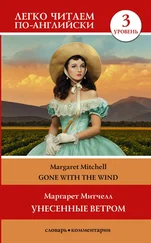Siri Mitchell - Chateau of Echoes
Здесь есть возможность читать онлайн «Siri Mitchell - Chateau of Echoes» весь текст электронной книги совершенно бесплатно (целиком полную версию без сокращений). В некоторых случаях можно слушать аудио, скачать через торрент в формате fb2 и присутствует краткое содержание. Жанр: Современная проза, на английском языке. Описание произведения, (предисловие) а так же отзывы посетителей доступны на портале библиотеки ЛибКат.
- Название:Chateau of Echoes
- Автор:
- Жанр:
- Год:неизвестен
- ISBN:нет данных
- Рейтинг книги:3 / 5. Голосов: 1
-
Избранное:Добавить в избранное
- Отзывы:
-
Ваша оценка:
- 60
- 1
- 2
- 3
- 4
- 5
Chateau of Echoes: краткое содержание, описание и аннотация
Предлагаем к чтению аннотацию, описание, краткое содержание или предисловие (зависит от того, что написал сам автор книги «Chateau of Echoes»). Если вы не нашли необходимую информацию о книге — напишите в комментариях, мы постараемся отыскать её.
Chateau of Echoes — читать онлайн бесплатно полную книгу (весь текст) целиком
Ниже представлен текст книги, разбитый по страницам. Система сохранения места последней прочитанной страницы, позволяет с удобством читать онлайн бесплатно книгу «Chateau of Echoes», без необходимости каждый раз заново искать на чём Вы остановились. Поставьте закладку, и сможете в любой момент перейти на страницу, на которой закончили чтение.
Интервал:
Закладка:
Medieval French Calendar
January
6 Les Rois Mages (Epiphanie)
14 Saint Hilaire
21 Saint Agnès
25 Conversion de Saint Paul
February
5 Sainte Agathe
6 Shrove Tuesday (1459)
7 Ash Wednesday (1459)
10 Sainte Scholastique
17 Shrove Tuesday (1461)
18 Ash Wednesday (1461)
22 La Chaire de Saint Pierre
24 Saint Matthias
26 Shrove Tuesday (1460)
27 Ash Wednesday (1460)
29 Leap year (1460)
March
2 Shrove Tuesday (1462)
3 Ash Wednesday (1462)
12 Saint Grégoire le Grand
16 Saint Grégoire d’Arménie
17 Saint Patrice
21 Saint Benoît
23 Good Friday (1459)
25 Easter (1459) (Annonciation)
April
3 Good Friday (1461)
5 Easter (1461)
11 Good Friday (1460)
13 Easter (1460)
16 Good Friday (1462)
18 Easter (1462)
21 Saint Anselme
23 Saint Georges
25 Saint Marc
May
1 Saints Jacques et Philippe
3 Ascension (1459)
6 Saint Jean Martyr
13 Pentecôte (1459)
14 Ascencion (1461)
22 Ascencion (1460)
24 Pentecôte (1461)
27 Ascension (1462)
June
1 Pentecôte (1460)
6 Pentecôte (1462)
11 Saint Barnabé
14 Saint Basile le Grand
24 Saint Jean-Baptiste
29 Saint Pierre
30 Saint Paul
July
22 Sainte Marie-Madeleine
25 Saint Jacques le Majeur
26 Sainte Anne
August
4 Saint Dominique
10 Saint Laurent
12 Sainte Claire
13 Sainte Radegonde
15 Assomption
21 Sainte Bernard
24 Saint Barthélemy
28 Saint Augustin
September
14 Saint Etienne
21 Saint Matthieu
29 Saint Michel
October
9 Saint Dynys
28 Saint Simon
November
1 Toussaint
11 Saint Martin de Tours
15 Saint Malo
22 Sainte Cécile
24 Sainte Flora
30 Saint André
December
6 Saint Nicolas
11 Saint Damase, pape
13 Sainte Lucie
21 Saint Thomas, apôtre
25 Noël
26 Saint Etienne
27 Saint Jean, apôtre
28 Les Saints Innocents
29 Saint Thomas Becket
Lexicon of French Cooking Terms
Apéritifs-Drinks served before dinner to stimulate the appetite. Traditionally they have been sweet fortified wines (Banyuls, Muscat, Frontignanc), liqueurs (Porto, Madeira, Samos, Pineau), Vermouth, drinks with a wine base (Martini, Byrrh, Campari), anise-flavored drinks (Pastis, Ricard), whisky, and grain alcohols (gin, vodka, aquavit, sake).
Armagnac-Grape brandy produced in the Gascony region of France that has notes of prune and plum. The best Armagnacs come from the Bas Armagnac (lower Armagnac) district. Unlike the double distillation process for Cognacs, most Aramagnacs are distilled only once and then aged in oak barrels. They are distinguished by designations such as VS, VSOP, and XO, which designate the youngest liquid used in the blend, by the age of the brandy, and by their vintage if the blend of grape juices used in the mix is from the same year.
Baguettes-The classic French bread, it is a crusty, elongated yeast bread made with wheat flour, water, salt, and yeast.
Béchamel sauce-The classic white sauce. Made with butter, flour, milk, and seasoned with nutmeg, salt, and pepper.
Blanquette de veau-A ragoût made with veal, leeks, carrots, and onions. The thickening of the sauce is done with egg yolks, cream, and lemon juice. Traditionally it is served with white rice or steamed potatoes and a Saint-Joseph wine.
Boeuf bourguignon-A ragoût made using tougher pieces of beef, onions, carrots, bacon, mushrooms, tomato paste, a bottle of red burgundy wine, and seasoned with a bouquet garni and garlic.
Bouquet garni-Sprigs of parsley, thyme, and a bay leaf tied together and used to flavor a recipe. It may also include sage, celery, or rosemary. This “bouquet” of herbs is always withdrawn from the dish before serving.
Braisé de boeuf-Braised beef, cooked with onions, white wine, lemon, garlic, diced bacon, and flavored with parsley, thyme, and bay leaf. Braising is a cooking technique in which tougher, less expensive cuts of meat are steamed in a covered pot with very little liquid.
Brioche-Sweet yeast bread made with butter and eggs, it can be baked in different shapes of molds. The dough must go through three periods of rising before being baked.
Bruschetta-An Italian appetizer made of thickly sliced bread, traditionally grilled and rubbed with garlic. It is served with olive oil and salt. Many times it is garnished with tomatoes, herbs, cheese, or other accompaniments.
Bûche de Noël-A French Christmas tradition, this pastry is most often made of a thin rolled cake frosted with chocolate, vanilla, or coffee-flavored butter cream, to look like a log, and decorated with meringue mushrooms and almond paste holly leaves.
Carte Noir-A popular brand of French coffee that can be purchased at a grocery store.
Cassoulet-A hearty stew from southwestern France, this ragoût mixes white beans and meat in one of three styles: Castelnaudary is made with pork (ham and sausage); Carcassonne is made with mutton and partridge; Toulouse is made with pork, mutton, and local sausage.
Cidre-Hard apple cider. It is fermented without the addition of sugar or yeast. Often identified with the Breton and Norman cuisines and regions of France.
Civet de sanglier-A ragoût made from wild boar simmered with red wine; a civet is always finished with the addition of blood from the animal being cooked (or pig’s blood in a pinch) to thicken the sauce.
Confiture-Jam or preserves made with cooked fruit and using sugar as the preserving agent. In France, commercial jams labeled “extra” contain at least 45 percent fruit. Regular confiture must contain at least 35 percent fruit.
Confiture de figues et marrons-Fig and chestnut jam.
Coquilles St. Jacques-Sea scallops. Their season runs from September to May, and there are two varieties: Atlantic or Mediterranean. The classic preparation is served in shells with shallots and mushrooms in a béchamel sauce, garnished with mashed potatoes piped along the edge of the shell.
Cordon Bleu-Founded in 1895, Le Cordon Bleu offers instruction in cuisine and pastry as well as degrees in different areas of hospitality and a Master of Arts in Gastronomy. According to their promotional literature, “The origin of the expression ‘Cordon Bleu’ comes from the 1578 foundation of the Order of Knights of the Holy Spirit. The members of the order wore a medal suspended on a blue ribbon and their spectacular feasts became legendary. The expression ‘Cordon Bleu’ was then later applied to mean an outstanding chef.” Le Grand Diplôme Le Cordon Bleu may be earned in nine intensive months of study.
Cornichons-These miniature cucumbers conserved in seasoned vinegar are a classic accompaniment for cold and boiled meats, pâtés, terrines, and are also featured as an ingredient in many sauces.
Crème anglaise-Cream made with milk, vanilla beans, egg yolks, and sugar. Always served cold, it is used as an ingredient in various desserts, as a base for ice cream, and for drizzling over cakes and other sweets.
Crème caramels-A custard or flan cooked in a caramel-lined mold or ramekin.
Crème fraîche-The product of skimming whole milk, this cream is the consistency of sour cream but with a sweeter taste. It is used in many sauces, as a thickening agent in various dishes and as an accompaniment for desserts.
Crêpes-Of Breton origin, these flat “pancakes” are made with flour, milk, and either salt or sugar depending on whether they will be used for a sweet or savory dish. Traditionally crêpes made with buckwheat flour, galettes sarrasin , or crêpes noires , were used for savory dishes and crêpes made with white flour were used for desserts. In general, crêpes are served simply in France. For lunch or dinner with fillings of ham, cheese, egg, and/or mushrooms. For dessert with sugar, chocolate, fruit, jam, or nutella.
Читать дальшеИнтервал:
Закладка:
Похожие книги на «Chateau of Echoes»
Представляем Вашему вниманию похожие книги на «Chateau of Echoes» списком для выбора. Мы отобрали схожую по названию и смыслу литературу в надежде предоставить читателям больше вариантов отыскать новые, интересные, ещё непрочитанные произведения.
Обсуждение, отзывы о книге «Chateau of Echoes» и просто собственные мнения читателей. Оставьте ваши комментарии, напишите, что Вы думаете о произведении, его смысле или главных героях. Укажите что конкретно понравилось, а что нет, и почему Вы так считаете.












